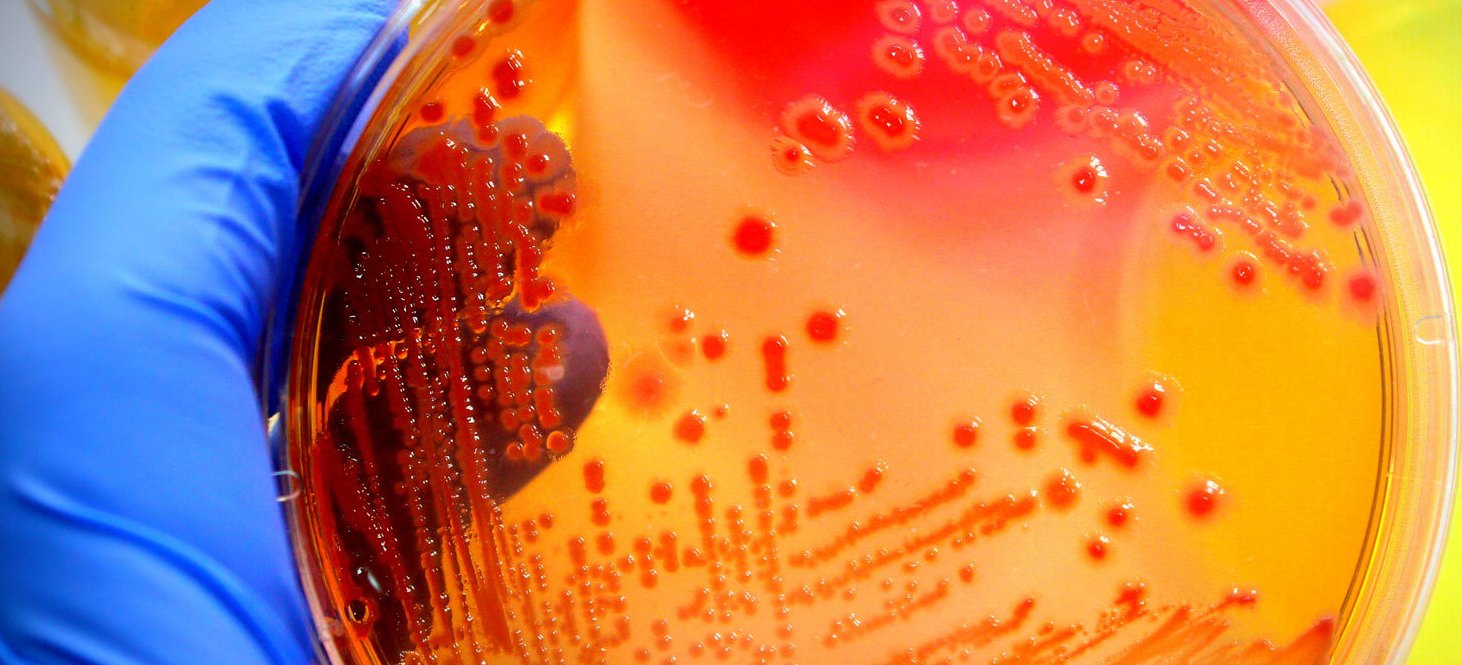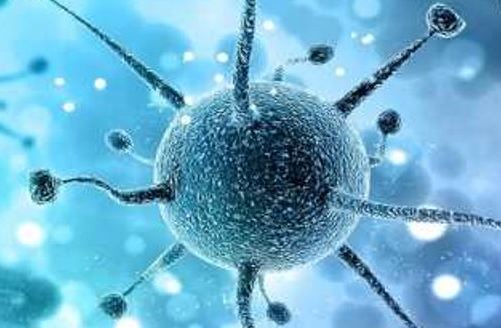Microbiology (Micros-Small, Bios-Life, Logy-Study)is simply defined as the study of microscopic organisms that are too small to be seen clearly with the naked eye including bacteria, fungi, algae, protozoa, viruses and prions. It is simply the scientific study of microorganisms. Microorganisms or microbes are organisms that are too small to be seen by an unaided eye; and they include bacteria, fungi, viruses, protozoa, algae and prions as aforementioned. Microbes thrive in an amazing diversity of habitats in extremes of heat, cold, radiation, pressure, salinity, and acidity and often where no other life forms could exist. Microbiology encompasses the study of both microscopic organisms (i.e. invisible forms of life) and macroscopic organisms (i.e. visible forms of life) since some group of microbes (particularly some algae and fungi) can also exist in the macroscopic state in their natural environment; and this feature allows them to be spotted in their habitat even without a microscope, the number one tool for observing microorganisms. It is also the study of microorganisms and their interaction with other living organisms including humans, plants and animals and the entire natural environment or ecosystem.
Microbiology is an experimental biological science that deals with invisible forms of life or microbes; and it employs a variety of techniques that includes the isolation, growing/culturing, identification, and the studying of microorganisms (in their microscopic or macroscopic forms) for the benefit of mankind. Though the concept of microbiology is often synonymous with the study of bacteria (bacteriology); this experimental field of biological sciences also includes the study of fungi (mycology), algae (algology), viruses (virology), and protozoa (protozoology) as well as the study of other macro-organisms (e.g. lichens and mushrooms). Microorganisms as earlier said are organisms that are usually too small (less than 1 mm in diameter) to be seen by the naked eye. However, it is noteworthy that some macroscopic forms of organisms including some fungi (e.g. moulds) and algae as earlier highlighted still exist. Microbiology is a fundamental biological science that focuses on small forms of life, and how these organisms can be understood and harnessed for the benefit of mankind, medically, industrially, agriculturally and economically.
As one of the fields of biological sciences and a fundamental aspect of the medical and biomedical sciences, the field of Microbiology (which has been in existence for about three centuries now) is a wide-ranging subject that includes immunology, virology, bacteriology, parasitology, mycology, serology, and algology. The above definition of microbiology may not be all encompassing due to the reality of the fact that some microorganisms are more often than not larger and visible to the naked eyes. Some examples of microorganisms which are large and seen by the naked eyes may include Rhizopus nigricans (the bread mould fungi), Thiomargarita namibiensis and Epulopiscium fishelsoni and some filamentous algae (e.g. blue-green algae). T. namibiensis (which measures about 100-750 µm in diameter) and E. fishelsoni (which measures about 100-600 µm in diameter) are currently the world’s giant bacteria which are usually bigger than the variety of known bacteria that usually measures about 0.3 µm or less than 1 mm in diameter (e.g. Escherichia coli). Both T. namibiensis and E. fishelsoni are found in aquatic habitats especially in marine and/or freshwaters; and they may also be called marine microbes.
Microbiology is an applied biological science which deals with many important practical problems in agriculture, medicine, the soil, and the environment; and the knowledge of microbiology is also applied in the industry such as in food industry, biotechnology, brewery and pharmaceutical industry where microbes are used to produce a variety of products and services that are beneficial to mankind, plants and other animals. The field of microbiology which is like the foundation of all the other biological sciences has enormous relevance in other fields such as biology, pharmacy, nursing, ecology, biotechnology, nanomedicine, biochemistry, molecular biology, medicine and agriculture to mention but a few. Microbiology is the bedrock of medicine and other health-related disciplines because several of the infectious diseases that negatively influence the human race as well as animals and plants are caused by microorganisms, which are the main subject of microbiologists. As an applied biological science, the knowledge of microbiology can be applied in a wide variety of human endeavours to improve the quality of life of man and animals and even improvement in crop production.
Applied microbiology is therefore the application of the knowledge of microbiology (i.e. understanding of microbes) to solving tangible or practical problems especially, but not limited to the area of biotechnology, agriculture, medicine, pharmacy, food microbiology and bioremediation. In applied microbiology, the metabolic potentials of beneficial microorganisms inclusive of those that cause disease are exploited in a beneficial way to solve problems in the environment as well as develop drugs, vaccines and other therapeutics that are used to treat and manage infectious diseases caused by microbes.
Microbiologists are scientists who specialize in the study of microorganisms. Disease-causing microorganisms are generally known as pathogens; and pathogenic bacteria, pathogenic fungi, pathogenic protozoa and pathogenic viruses are of clinical or medical importance because of the infections and diseases that they cause. Microbiology also employs techniques such as the use of culture media as earlier said for the successful isolation and growth of pure cultures of microorganisms; sterilization techniques, and staining and microscopy techniques amongst others for the identification of microbes from both environmental and hospital samples. It is of particular interest to mention that the field of microbiology would not have been anticipated or fully developed without the successful development of a tool – “the microscope” – which made the field of microbiology to be outstanding amongst the other biological sciences.
The singular discovery of the microscope made it possible to see or visualize microorganisms (which are organisms too small to be seen by the naked eyes) which existed unknown for a very long period of time. There exists a long list of microorganisms (both harmless and pathogenic organisms) in the universe, and these has greatly impacted humanity both positively (e.g. in the industry for the production of drugs and foods) and negatively (e.g. in the development and propagation of infectious diseases) even till date. And as man’s knowledge about the microbial world continuously evolves, so will new microorganisms be discovered, identified and classified; and this phenomenon (i.e. the discovery of new microorganisms) will add up to the list of already known microscopic organisms. Regardless of the wealth of knowledge that microbiologist’s across the world have about the usefulness, importance and the available number or microorganisms, there still abound a lot to be uncovered about the microbial world especially in this 21st century and even in the future.
Microorganisms positively and negatively influence the existence of life on earth in countless ways; and as diseases and new microbes continue to emerge, a new level of knowledge and understanding about these ubiquitous organisms is essential to unravel their latest potential. The new areas of molecular biology and recombinant DNA technology coupled with the complete sequencing of some microorganism’s genome including that of human’s holds potential to unleash new frontiers in the study of microbiology especially in the sustainable containment of drug resistance amongst pathogenic microorganisms via the development of more effective drugs that will be less-amenable to antibiotic resistance genes or degradative enzymes of microbial origin.
Microorganisms are ubiquitous i.e. they are found everywhere; and microbes also exist in places where life rarely exists such as in the hot springs, icebergs and other desiccated part of the environment. The activities of microorganisms hugely affect the entire ecosystem of the earth. An understanding of their power and mode of action and on how their activities directly or indirectly impact humanity and other living organisms in the environment will improve on man’s quality of life. The production of some biopharmaceuticals including insulin, interferon, and other recombinant products for the medical, industrial and biomedical sciences has been greatly enhanced by the activities of microorganisms. Microorganisms are currently used in the food and biotechnology industry to produce various food supplements especially probiotics for both man and animals.
Probiotics are preparations of bacterial cultures (e.g. Lactobacillus species) which have health benefits when consumed. For example, some probiotics have been discovered to replenish the normal microflora of the gastrointestinal tract especially in cases when the normal flora of the gut have been destabilized or eroded by antimicrobial agents and other predisposing factors. Some probiotics helps to prevent infection in the individuals aside its function as a food supplement. There are a handful of food products such as vinegar and yogurt amongst others that contain some inoculums of beneficial microorganisms which confer therapeutic and nutritive benefits to the animals or human hosts taking them. The significance of microbiology particularly microorganisms cannot be overemphasized because mankind benefits a lot from them, and the activities of microbes impacts on the entire ecosystem in various ways either beneficially or harmfully.
REFERENCES
Atlas R.M (2010). Handbook of Microbiological Media. Fourth edition. American Society of Microbiology Press, USA.
Balows A, Hausler W, Herrmann K.L, Isenberg H.D and Shadomy H.J (1991). Manual of clinical microbiology. 5th ed. American Society of Microbiology Press, USA.
Beers M.H., Porter R.S., Jones T.V., Kaplan J.L and Berkwits M (2006). The Merck Manual of Diagnosis and Therapy. Eighteenth edition. Merck & Co., Inc, USA.
Black, J.G. (2008). Microbiology: Principles and Explorations (7th ed.). Hoboken, NJ: J. Wiley & Sons.
Brooks G.F., Butel J.S and Morse S.A (2004). Medical Microbiology, 23rd edition. McGraw Hill Publishers. USA. Pp. 248-260.
Dictionary of Microbiology and Molecular Biology, 3rd Edition. Paul Singleton and Diana Sainsbury. 2006, John Wiley & Sons Ltd. Canada.
Dubey, R. C. and Maheshwari, D. K. (2004). Practical Microbiology. S.Chand and Company LTD, New Delhi, India.
Garcia L.S (2010). Clinical Microbiology Procedures Handbook. Third edition. American Society of Microbiology Press, USA.
Garcia L.S (2014). Clinical Laboratory Management. First edition. American Society of Microbiology Press, USA.
Madigan M.T., Martinko J.M., Dunlap P.V and Clark D.P (2009). Brock Biology of Microorganisms, 12th edition. Pearson Benjamin Cummings Inc, USA.
Mahon C. R, Lehman D.C and Manuselis G (2011). Textbook of Diagnostic Microbiology. Fourth edition. Saunders Publishers, USA.
Prescott L.M., Harley J.P and Klein D.A (2005). Microbiology. 6th ed. McGraw Hill Publishers, USA. Pp. 296-299.
Ryan K, Ray C.G, Ahmed N, Drew W.L and Plorde J (2010). Sherris Medical Microbiology. Fifth edition. McGraw-Hill Publishers, USA.
Ryan K, Ray C.G, Ahmed N, Drew W.L and Plorde J (2010). Sherris Medical Microbiology. Fifth edition. McGraw-Hill Publishers, USA.
Singleton P and Sainsbury D (1995). Dictionary of microbiology and molecular biology, 3rd ed. New York: John Wiley and Sons.
Talaro, Kathleen P (2005). Foundations in Microbiology. 5th edition. McGraw-Hill Companies Inc., New York, USA.
Salyers A.A and Whitt D.D (2001). Microbiology: diversity, disease, and the environment. Fitzgerald Science Press Inc. Maryland, USA.
Discover more from Microbiology Class
Subscribe to get the latest posts sent to your email.





